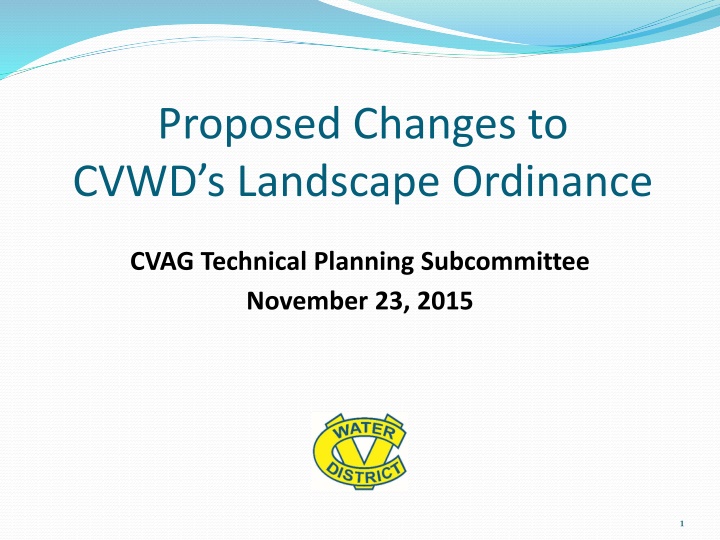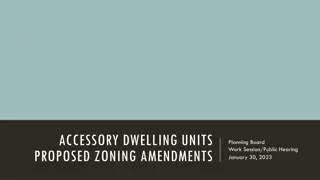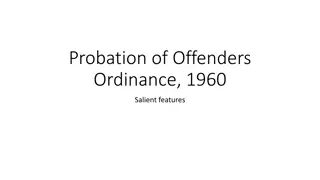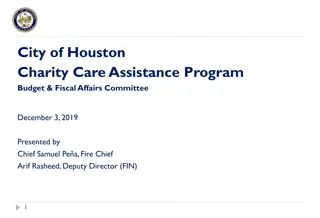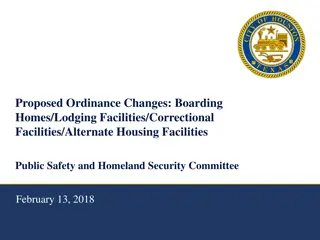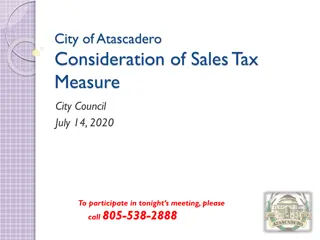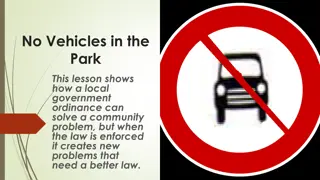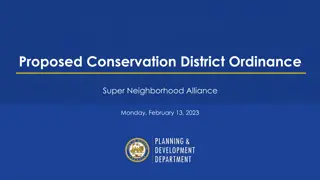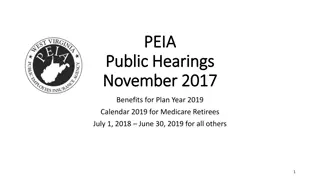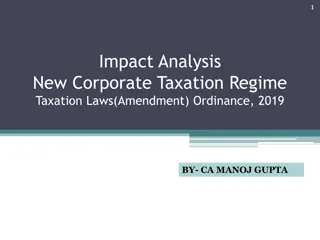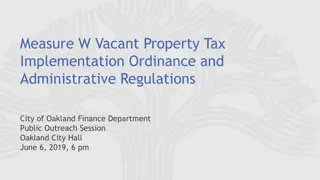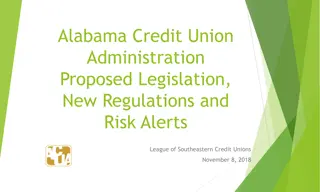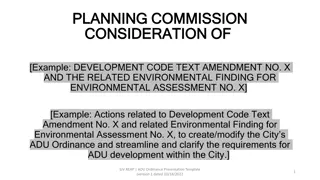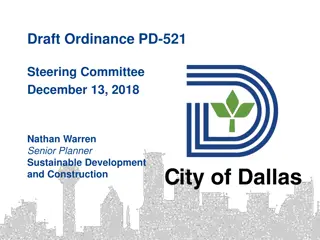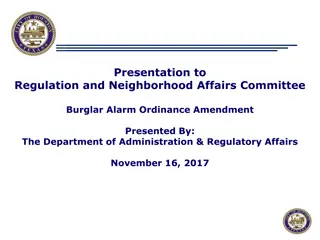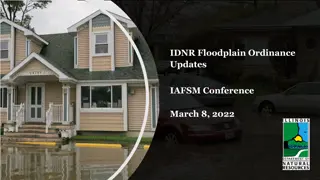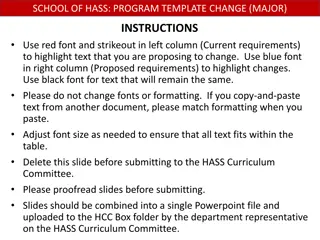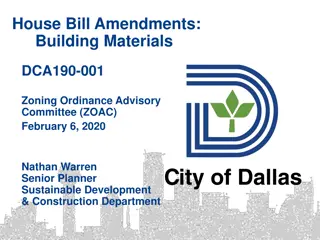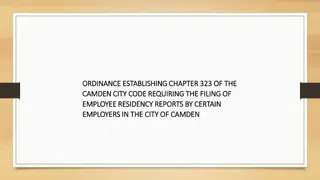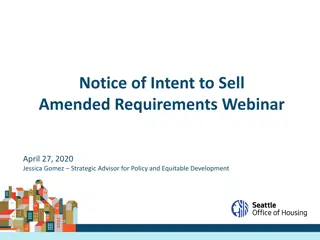Proposed Changes to CVWD's Landscape Ordinance - November 2015
CVWD's Landscape Ordinance, originally passed in 2009, underwent revisions in response to Governor Brown's 2015 drought actions. The ordinance was aligned with the State's requirements, with adjustments made to applicability, evapotranspiration factors, and irrigation efficiency rates to ensure water conservation. The changes aimed to enhance efficiency and compliance with mandatory reductions in urban water use.
Download Presentation

Please find below an Image/Link to download the presentation.
The content on the website is provided AS IS for your information and personal use only. It may not be sold, licensed, or shared on other websites without obtaining consent from the author.If you encounter any issues during the download, it is possible that the publisher has removed the file from their server.
You are allowed to download the files provided on this website for personal or commercial use, subject to the condition that they are used lawfully. All files are the property of their respective owners.
The content on the website is provided AS IS for your information and personal use only. It may not be sold, licensed, or shared on other websites without obtaining consent from the author.
E N D
Presentation Transcript
Proposed Changes to CVWD s Landscape Ordinance CVAG Technical Planning Subcommittee November 23, 2015 1
Landscape Ordinance Originally passed in 2009 Intended to ensure future water use is efficient More stringent than the State of California s requirements Cities were required to adopt an ordinance Some adopted CVWD s Others defaulted to the State 2
Governors Drought Actions - 2015 On April 1, Governor Brown issued Executive Order directing State Water Resources Control Board to impose mandatory statewide 25% reduction in urban water use through February 28, 2016 Required revisions of the Landscape Ordinance Must be adopted by December Or February 1, 2016 if adopting a regional ordinance
CVWD Action Staff has worked to revise the ordinance to ensure we align with the State ordinance. Many changes were not necessary as we were already more stringent in some areas. CVWD Board Agenda - November 24. 4
Changes to the Ordinance Applicability: Previously the ordinance and plan check applied to landscapes greater than 5,000 square feet. Now it applies to landscapes greater than 2,500 square feet. 5
Changes to the Ordinance Evapotranspiration Adjustment Factor (How we calculated the Maximum Applied Water Allowance): Previously, the ordinance required an ET Adjustment Factor of 0.5. Now, it requires an ET Adjustment Factor of 0.45. 6
Changes to the Ordinance Irrigation Efficiency Rates: Previously, 75% efficient for spray irrigation and 81% efficient for drip irrigation Now, 75% efficient for spray irrigation and 90% efficient for drip irrigation 7
Changes to the Ordinance Narrow areas: Previous, areas less than ten feet in width must be irrigated with subsurface irrigation or other means that produces no runoff or overspray. Now, long, narrow or irregularly shaped turf areas shall not be designed and areas less than ten-feet in width will be allowed if irrigation design reflects the use of subsurface irrigation or a surface flow/wick irrigation system. 12
Changes to the Ordinance Mulch: Previously, the ordinance required at least 2 inches of soil covering mulch. Now, the ordinance will require at least 3 inches of mulch. 13
Changes to the Ordinance Landscape Meters: Previously, required except for single family homes. Now, required for single family homes except homes with a landscape area less than 5,000 square feet. Can be serviced by the district or sub-metered. 14
Changes to the Ordinance Flow sensors: Previously, flow sensors were required for all projects except single and multifamily. Now, they are required for all projects where a dedicated landscape meter is required. 15
Additions to the Ordinance Easements: No permanent structures or trees within CVWD and/or USBR (US Bureau of Reclamation) easements. No trees shall be installed within 15' of a CVWD and/or USBR pipeline. Surface improvements may be installed within CVWD and/or USBR easements only upon the prior consent of CVWD 16
Additions to the Ordinance Overhead irrigation will not be permitted within 24- inches of any non-permeable surface. There are no restrictions on the irrigation system type if the landscape area adjacent is permeable and no overspray and runoff occurs. 17
Additions to the Ordinance Medians: High water use plants are prohibited in street medians 18
Timeline for Ordinance Adoption State deadline: February 1, 2016 If ordinance not adopted by then, state ordinance temporarily in effect First and second reading for ordinance CVWD ordinance will go into effect Dec. 1 if approved by CVWD Board this week CVAG will provide sample staff report, resolution, support as needed 19
PAST RESPONSE Adopted Stage 3 Water Shortage Contingency Ordinance on May 12, 2015 Adopted state s water-use restrictions and local restrictions and recommendations Adopted Drought Penalties effective July 1, 2015 Increased funding for conservation programs Increased Water Management staff level Enhanced public outreach and education 21
CONSERVATION RESULTS Conservation by Month 2013 vs. 2015 45 40.6% 40 Conservation Mandate 36% 35 Percent reduction 27.7% 30 26.5% Five-month average 27% 25 21.3% 20 16.4% 15 10 5 0 June July August September October 22
CONSERVATION SUCCESS Top Water Savers in the State by gallons Gallons saved June Sept. 13,192,746,725 1. LA Department of Water and Power 7,842,500,000 2. East Bay MUD 7,081,900,000 3. San Jose Water Company 6,174,789,448 4. City of Fresno 5,990,876,241 5. City of San Diego 5,676,000,000 6. City of Sacramento 4,285,793,479 7. Coachella Valley Water District 23
FUTURE SAVINGS POTENTIAL If all penalty consumption was eliminated, we would meet the 36% conservation mandate. 4,000,000 3,500,000 3,000,000 2,500,000 Ccf 2,000,000 1,500,000 1,000,000 500,000 0 July August September October Tiers 1-2B Tiers 1-2A 36% Reduction Goal 1 Ccf = 748 gallons 24
PROPOSED NEXT STEPS Increase funding for conservation programs Increase public outreach Adopt new restrictions Increase Drought Penalties 25
DROUGHT PENALTIES Drought Penalty Per Ccf Budget Based Tiered Rates with a Drought Penalty for not reducing water use 36% $0 Tier 1: Excellent 10 Ccf $1.01 $0 Tier 2: With 36% less water use $1.12 Penalty + $2.51 Without 36% less water use $1.12 + $3.34 Tier 3: Inefficient 105 150% of budget $1.68 + $5.01 Tier 4: Excessive 150 250% of budget $2.24 + $10.03 Tier 5: Wasteful Over 250% of budget $4.48 Did not change budgets and rates within Tiers Encourages reducing outdoor water use by 36% 26
DROUGHT PENALTIES Budget Based Tiered Rates with a Drought Penalty for not reducing water use 36% Proposed New Drought Penalty Drought Penalty Per Ccf $0 $0 Tier 1: Excellent 10 Ccf $1.01 $0 $0 Tier 2: With 36% less water use $1.12 + $2.51 $2.51 Without 36% less water use $1.12 Penalty + $3.34 $6.68 Tier 3: Inefficient 105 150% of budget $1.68 + $5.01 $15.03 Tier 4: Excessive 150 250% of budget $2.24 + $10.03 $40.12 Tier 5: Wasteful Over 250% of budget $4.48 Increases proposed for only top three Tiers 27
Presentation Prepared by: Katie Ruark Conservation Manager Coachella Valley Water District kruark@cvwd.org 28
